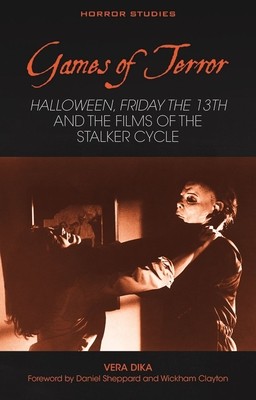
- We will send in 10–14 business days.
- Author: Vera Dika
- Publisher: University of Wales Press
- ISBN-10: 1837722587
- ISBN-13: 9781837722587
- Format: 14 x 21.8 x 2 cm, kieti viršeliai
- Language: English
- SAVE -10% with code: EXTRA
Reviews
Description
A first-of-its-kind study of the "stalker" subgenre of slasher films. From 1978 to 1981 there was a proliferation of horror films entering the American film market. Among this group of films, one narrative formula proved dominant, both in its commercial profitability and in its ability to engender copies and sequels--what has come to be known as slasher films. Games of Terror is the first study to isolate a smaller group of films, within the slasher genre, what Vera Diker identifies as the "stalker" film. These include such movies as Halloween (1978), Friday the 13th (1980), Prom Night (1980), Terror Train (1980), and My Bloody Valentine (1981). As Diker shows, the distinguishing characteristic of the stalker film lies in its representation of the major character: the killer. Kept primarily offscreen for the duration of the film, the killer is usually made knowable by a distinctive shot or series of shots. In this book, stalker films are studied as a group, not as individualistic products of a specific author, and are approached using an interdisciplinary method. Games of Terror concludes that the stalker film satisfies its audience on several levels: it functions simultaneously as a cinematic game, a psychosexual titillation, and a modern-day myth. In its latter function, the Stalker film serves as a system of communication, explaining an ongoing cultural conflict to its predominantly young (teenage) audience.EXTRA 10 % discount with code: EXTRA
The promotion ends in 22d.19:55:08
The discount code is valid when purchasing from 10 €. Discounts do not stack.
- Author: Vera Dika
- Publisher: University of Wales Press
- ISBN-10: 1837722587
- ISBN-13: 9781837722587
- Format: 14 x 21.8 x 2 cm, kieti viršeliai
- Language: English English


Reviews